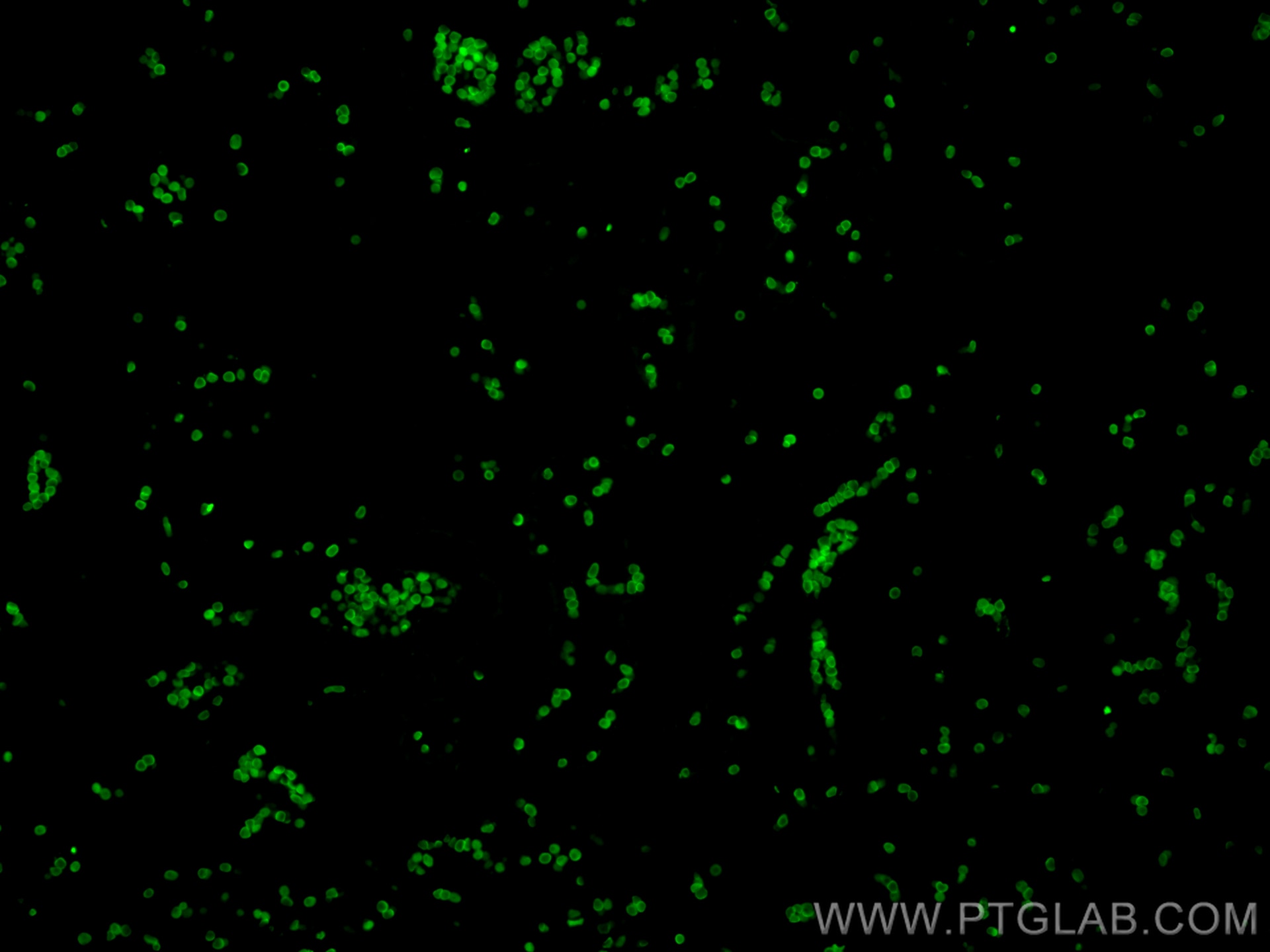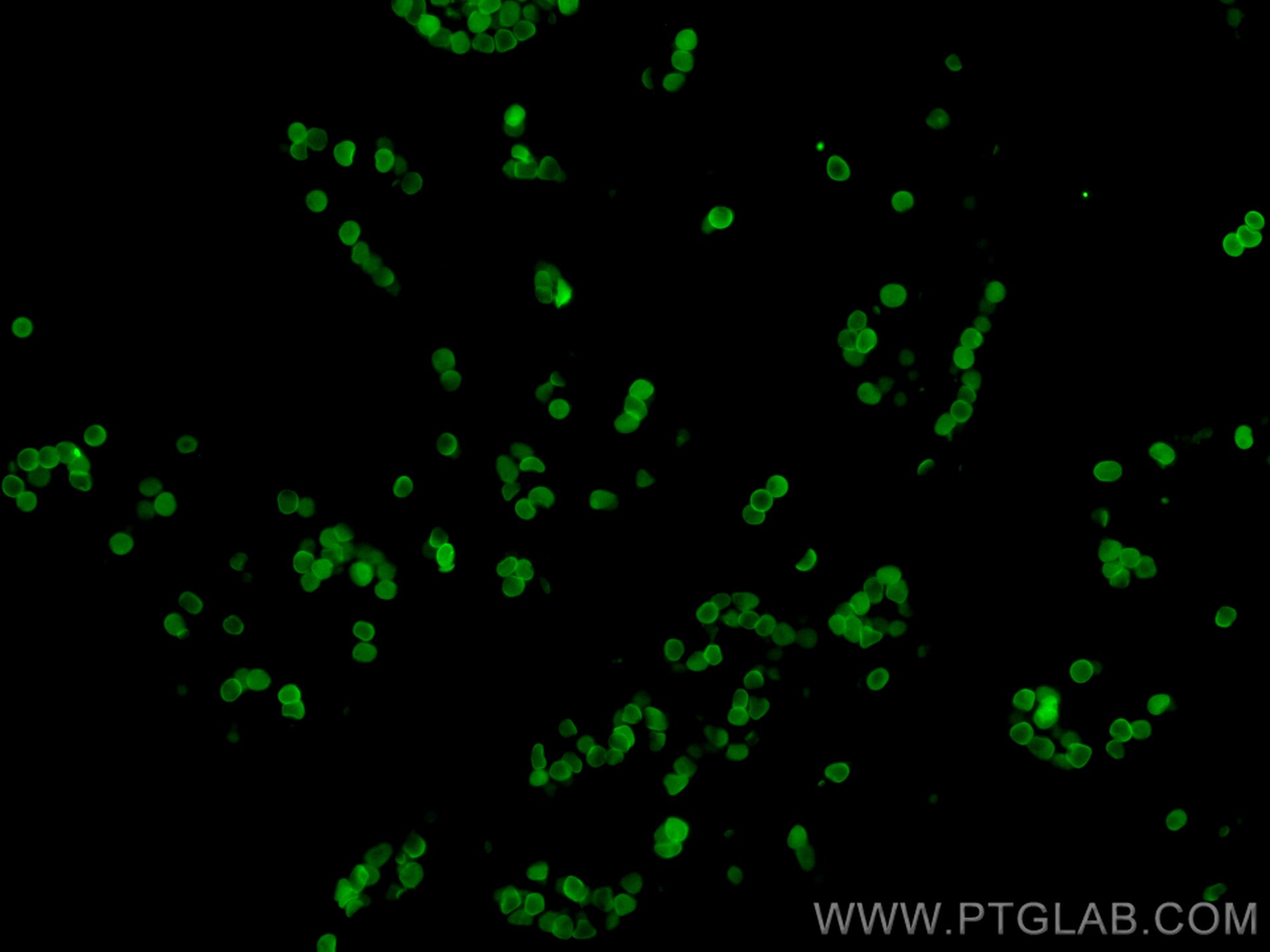Validation Data Gallery
Tested Applications
| Positive IF-P detected in | human placenta tissue |
Recommended dilution
| Application | Dilution |
|---|---|
| Immunofluorescence (IF)-P | IF-P : 1:50-1:500 |
| It is recommended that this reagent should be titrated in each testing system to obtain optimal results. | |
| Sample-dependent, Check data in validation data gallery. | |
Product Information
CL488-15874 targets Glycophorin A/CD235a in IF-P applications and shows reactivity with human samples.
| Tested Reactivity | human |
| Host / Isotype | Rabbit / IgG |
| Class | Polyclonal |
| Type | Antibody |
| Immunogen |
CatNo: Ag8635 Product name: Recombinant human GYPA protein Source: e coli.-derived, PGEX-4T Tag: GST Domain: 24-150 aa of BC005319 Sequence: EVAMHTSTSSSVTKSYISSQTNDTHKRDTYAATPRAHEVSEISVRTVYPPEEETGERVQLAHHFSEPEITLIIFGVMAGVIGTILLISYGIRRLIKKSPSDVKPLPSPDTDVPLSSVEIENPETSDQ 相同性解析による交差性が予測される生物種 |
| Full Name | glycophorin A (MNS blood group) |
| Calculated molecular weight | 150 aa, 16 kDa |
| Observed molecular weight | 36-38 kDa |
| GenBank accession number | BC005319 |
| Gene Symbol | Glycophorin A |
| Gene ID (NCBI) | 2993 |
| RRID | AB_3672641 |
| Conjugate | CoraLite® Plus 488 Fluorescent Dye |
| Excitation/Emission maxima wavelengths | 493 nm / 522 nm |
| Form | |
| Form | Liquid |
| Purification Method | Antigen affinity purification |
| UNIPROT ID | P02724 |
| Storage Buffer | PBS with 50% glycerol, 0.05% Proclin300, 0.5% BSA{{ptg:BufferTemp}}7.3 |
| Storage Conditions | Store at -20°C. Avoid exposure to light. Stable for one year after shipment. Aliquoting is unnecessary for -20oC storage. |
Background Information
Glycophorin A (GYPA) is the major transmembrane sialoglycoprotein in erythrocytes. It is a dimeric type I transmembrane protein carrying 15 closely clustered O-linked tetrasaccharides capped with sialic acid/N-acetylneuraminic acid (Neu5Ac). This 36 kDa protein represents the major sialoglycoprotein of the red blood cell membrane displaying about one million copies per cell. (PMID: 9490702)
Protocols
| Product Specific Protocols | |
|---|---|
| IF protocol for CL Plus 488 Glycophorin A/CD235a antibody CL488-15874 | Download protocol |
| Standard Protocols | |
|---|---|
| Click here to view our Standard Protocols |


